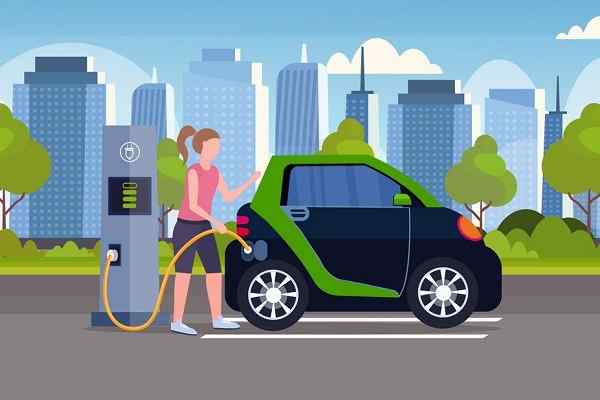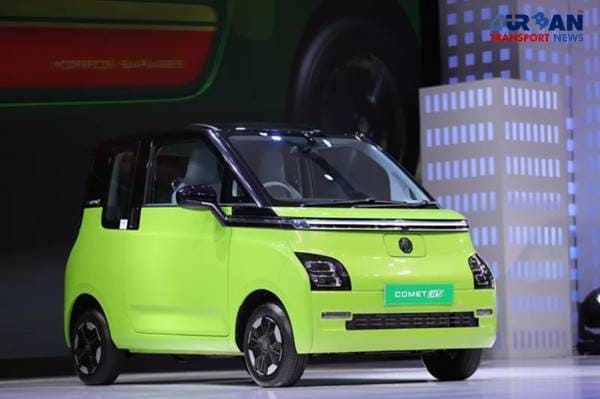 Understanding the Critical Role of Systems Approach in Urban Railway Projects
Understanding the Critical Role of Systems Approach in Urban Railway Projects Exclusive Interview with Ms. Serda Urganciyan, Partner-CEO at Studio 88 Architecture
Exclusive Interview with Ms. Serda Urganciyan, Partner-CEO at Studio 88 Architecture Titagarh Rail Systems set to deliver first sleeper Vande Bharat Train by late 2025
Titagarh Rail Systems set to deliver first sleeper Vande Bharat Train by late 2025 UAE's First Vertiport gets Operational approval, A game-changer in Autonomous Transportation
UAE's First Vertiport gets Operational approval, A game-changer in Autonomous Transportation Nafisah Aslam-Zainudeen: Inspiring the Next Generation of Female Engineers
Nafisah Aslam-Zainudeen: Inspiring the Next Generation of Female Engineers DRA-DMRC JV awarded major contract for redevelopment of Ahmedabad Railway Station
DRA-DMRC JV awarded major contract for redevelopment of Ahmedabad Railway Station Revolutionizing Transportation: Hyperloop Technology in Saudi Arabia
Revolutionizing Transportation: Hyperloop Technology in Saudi Arabia India is not just a market, it is becoming a beacon of hope for the future: Siemens AG
India is not just a market, it is becoming a beacon of hope for the future: Siemens AGSATEBA acquires Rail Business of De Bonte Group in Belgium
 Regent to launch High-Speed Seagliders to transform coastal transportation in UAE
Regent to launch High-Speed Seagliders to transform coastal transportation in UAE
The Dark Side: How electric vehicles are dangerous for the people and environment?

Electric mobility, which primarily involves the use of electric vehicles (EVs), has been promoted as a more environmentally friendly and sustainable alternative to traditional internal combustion engine vehicles. While electric mobility does offer various advantages over conventional vehicles, there are also some potential risks and challenges that need to be addressed to ensure its safety and environmental benefits are maximized. Here's an in-depth analysis of some of the dangers associated with electric mobility:
1. Battery Production and Recycling: The manufacturing of lithium-ion batteries, which are commonly used in EVs, involves the extraction and processing of raw materials like lithium, cobalt, and nickel. These processes can have significant environmental impacts, including habitat destruction, water pollution, and greenhouse gas emissions. Additionally, recycling of lithium-ion batteries is still in its early stages and can be challenging due to the complex and hazardous nature of the materials involved.
2. Energy Source and Grid Strain: While electric vehicles produce zero tailpipe emissions, the environmental impact depends on the energy source used to charge them. If the electricity comes from fossil fuel-based power plants, the net reduction in emissions might not be as significant. Furthermore, a sudden surge in electric vehicle adoption without proper infrastructure upgrades can strain the power grid, leading to potential blackouts and reliability issues.
3. Range Anxiety and Charging Infrastructure: Range anxiety, the fear of running out of battery power with no charging station nearby, is a significant concern for many potential EV buyers. Although charging infrastructure is improving, it is still not as widespread and easily accessible as traditional gas stations. This can cause inconvenience and apprehension among electric vehicle owners, especially in remote areas or during long trips.
4. Battery Fires: Lithium-ion batteries have the potential to catch fire or explode if damaged or improperly charged. Although the incidence of battery fires is relatively low, these incidents can be challenging to manage and may require specialized equipment and training for first responders. More than three dozen electric scooters have caught fire in India since last September 2021 causing much uproar, debate and anguish among the consumers about the safety of electric vehicle batteries. These incidents has taken the industry by surprise forcing consumers and industry observers to think differently.
5. E-Waste: As EVs and their components reach the end of their life cycle, there's a risk of generating electronic waste (e-waste). Proper recycling and disposal of electric vehicle components, especially batteries, are essential to minimize environmental and health hazards associated with e-waste.
6. Mining and Resource Depletion: The increasing demand for battery materials like lithium and cobalt raises concerns about resource depletion and social issues related to mining practices in some regions where these resources are abundant.
7. Pedestrian Safety: Electric vehicles are generally quieter than traditional vehicles, particularly at low speeds. This reduced noise can be dangerous for pedestrians, especially the visually impaired, who may not hear approaching electric vehicles.
8. Supply Chain Vulnerabilities: Like any technology, electric vehicles and their components rely on global supply chains. Disruptions in these supply chains, whether due to natural disasters, geopolitical issues, or other factors, can affect the availability and cost of electric mobility components and vehicles.
Despite these challenges, it is essential to acknowledge that electric mobility also has numerous benefits, such as reducing greenhouse gas emissions, improving air quality, and promoting energy independence. Many of the dangers mentioned above can be mitigated through research, innovation, and thoughtful policy measures, such as promoting renewable energy sources, implementing responsible recycling practices, and investing in charging infrastructure development.
Overall, electric mobility presents a promising pathway towards a more sustainable transportation system, but it requires careful consideration of the associated risks to ensure that it delivers on its potential for a cleaner and safer future.







